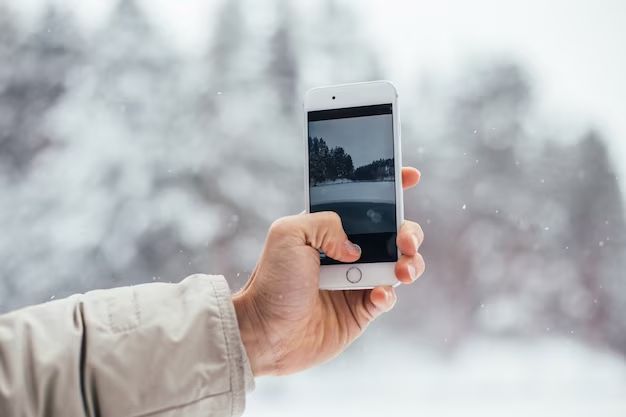Quick Answer
Putting ice directly on the back of your phone is generally not recommended. While it may provide temporary relief from overheating, it can potentially damage your phone in several ways. There are safer and more effective ways to cool down an overheated phone.
What Are the Risks of Putting Ice on Your Phone?
There are a few key risks associated with putting ice directly on your phone:
1. Thermal Shock
Exposing your phone’s components to extremely cold temperatures can cause thermal shock. This rapid contraction and expansion of the materials can lead to cracked screens, boards, or solder joints. The water from the melting ice can then seep into these cracks and cause corrosion or short circuit the electronics.
2. Condensation
As the ice melts into water, condensation can build up on or within your phone. This moisture can damage electronic components and trigger short circuits, leading to anything from temporary glitches to complete device failure.
3. Water Damage
Most modern phones have some level of water resistance but are not designed to be waterproof. If condensation forms or water drips into the ports, speakers, microphone or other openings, it could damage the internal components.
4. Screen Cracking
The intense cold from the ice pack could potentially crack or fracture the glass display on your phone. This is especially true if any pressure is applied or something is resting on top of the ice.
5. Battery Issues
Lithium-ion batteries used in phones can be degraded by exposure to extreme cold. This can reduce battery life, cause power issues or even pose a fire risk in severe cases of battery damage.
Are There Any Benefits to Using Ice?
Putting ice on your phone does have the potential benefit of lowering its internal temperature if it’s overheating. This can prevent slowdowns, glitches and shutdowns caused by high temperatures. However, the risks generally outweigh the temporary cooling benefits. There are many other, safer ways to cool down your phone.
What Are the Best Ways to Cool Down an Overheated Phone?
Here are some effective recommendations for cooling a phone without risking any damage:
1. Turn it off and give it a rest
Powering your phone off and letting it sit turned off for 30-60 minutes allows time for components to cool down to safe temperatures. This can prevent hardware damage and data loss.
2. Point a fan at it
Directing a fan to blow air on your warm phone helps dissipate heat without any condensation risk. Just make sure to avoid getting water or other debris blown into ports or speakers.
3. Remove protective case
Taking off any form-fitting cases prevents trapped heat buildup. Allowing more air circulation helps lower internal temperatures.
4. Switch to airplane mode
Cutting off cellular, wifi and background syncing reduces processing load and heat production. This lets it passively shed heat and cool down.
5. Close resource-heavy apps
If certain power-hungry apps like gaming or video streaming make your phone run hot, close them out completely to lower CPU usage.
6. Avoid direct sunlight
Keep your phone shaded and out of hot environments like cars on sunny days. High ambient temperatures make cooling much more difficult.
7. Wipe away dust buildup
Cleaning dust and debris from air vents, ports, speakers and the phone back allows better ventilation and heat dissipation.
8. Do a restart/reset
If overheating seems abnormal, try restarting your phone or resetting it to factory conditions. This clears any software issues contributing to excess heat production.
Key Takeaways
– Putting ice directly on your phone can damage screens, boards and internal components due to thermal shock, condensation, water exposure or cracking.
– While ice may temporarily cool a phone, many safer methods like powering off, fans, case removal, airplane mode, cleaning dust buildup and restarting/resetting are more effective for heat relief without risk.
– If concerning overheating persists after trying recommended cooling methods, have your phone serviced by the manufacturer, as hardware issues may need repair.
Frequently Asked Questions
Is it safe to put my phone in the refrigerator or freezer?
No, this is not recommended. The extremely cold temperature in refrigerators and freezers can damage phone components through thermal shock in the same way that ice can. Condensation is also very likely in these environments.
What temperature is too hot for my phone?
Most phones begin experiencing heat issues above 95°F (35°C). Prolonged exposure above 113°F (45°C) can cause permanent internal damage. It’s best to keep phones below these thresholds.
Why does my phone get so hot sometimes?
Frequent causes of overheating include intense usage while charging, direct sunlight, using resource-heavy apps, poor ventilation due to cases or dust buildup, and hardware problems with chips or batteries.
Is it OK to use an ice pack or frozen gel pack?
It’s inadvisable to place even an ice or gel pack directly on your phone. The extreme cold can still damage components through thermal shock. They are safer when used indirectly by wrapping in a towel first.
Can I put my phone in front of a fan or AC vent to cool it down?
Yes, blowing cooled air from a fan, air conditioner vent or other source is an effective way to keep your phone from overheating without risk, as long as precautions are taken to prevent debris from entering ports/speakers.
The Bottom Line
Placing ice or ice water directly on your phone may seem like a quick fix for overheating problems, but carries significant risk of internal damage due to thermal shock, condensation, water contact and screen cracking. For safe cooling, power off and rest your phone, remove cases, utilize fans or A/C air, limit sunlight and taxing usage, and keep it free of dust buildup. With proper precautions, you can effectively cool down an overheated phone without resorting to methods that can damage your device.
